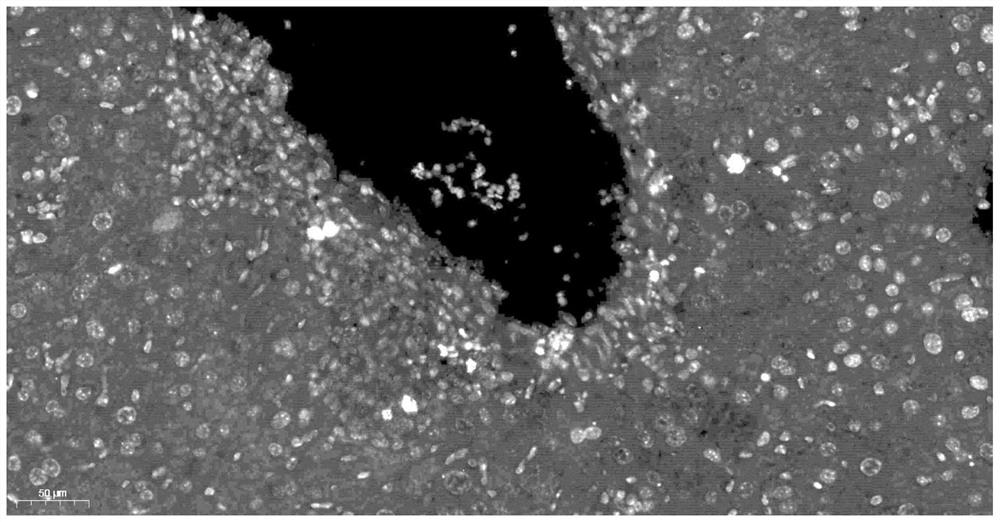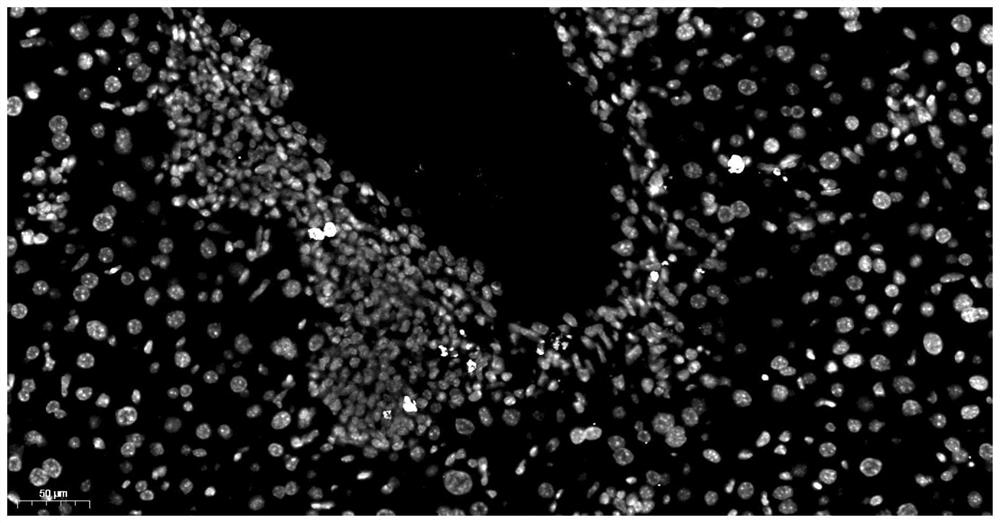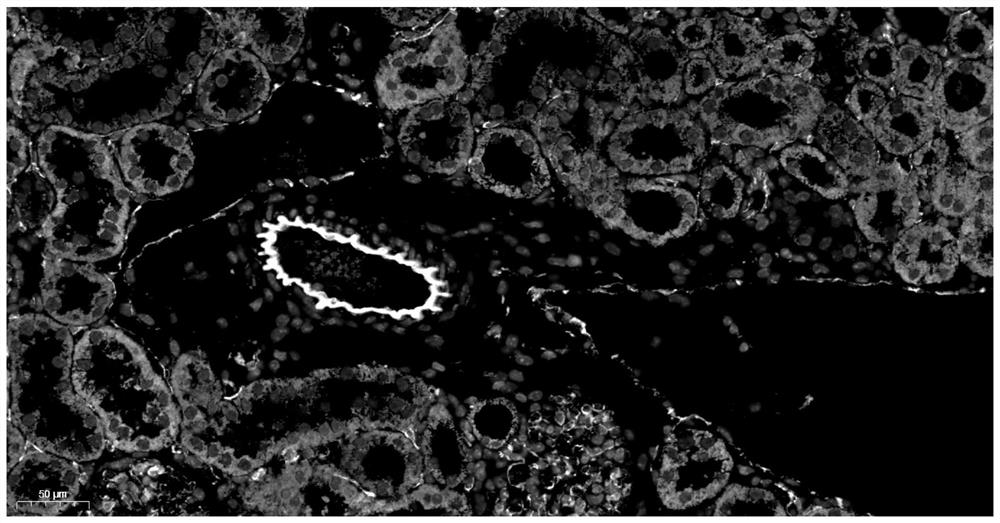Preparation method and application of tissue autofluorescence quenching agent
A technology of autofluorescence and fluorescence quenching, applied in the preparation of test samples, fluorescence/phosphorescence, material excitation analysis, etc., which can solve the problems of long time and lack of equipment.
- Summary
- Abstract
- Description
- Claims
- Application Information
AI Technical Summary
Problems solved by technology
Method used
Image
Examples
Embodiment 1
[0034] Preparation of Tissue Autofluorescence Quencher A: Weigh 8.0g of NaCl, 0.2g of KCl, 1.44g of Na2HPO4, and 0.24g of KH2PO4, add ultrapure water to dissolve to a constant volume of 1000ml, and obtain a phosphate buffer solution with a pH of 7.4. Weigh 10 mg of sodium borohydride and dissolve in 10 ml of phosphate buffer solution with a pH of 7.4.
[0035] Preparation of Tissue Autofluorescence Quencher B: Weigh 0.5 g of Sudan Black B, dissolve in 70% alcohol for 2 days, filter for later use.
Embodiment 2
[0037] Method of use of tissue autofluorescence quencher: mouse liver CD8 immunofluorescence
[0038] S1. Paraffin sections were dewaxed to water: put the sections in xylene I for 15 minutes, xylene II for 15 minutes, absolute ethanol I for 5 minutes, absolute ethanol II for 5 minutes, 85% alcohol for 5 minutes, 75% alcohol for 5 minutes, and distilled water to wash;
[0039] S2. Antigen retrieval: place the tissue slices in a repair box filled with EDTA antigen retrieval buffer (pH 8.0) and carry out antigen retrieval in a steamer. When the temperature reaches 95°C, time 30 minutes. During this process, excessive evaporation of the buffer should be prevented. Do not dry the slides. After natural cooling, place the slides in PBS (pH 7.4), shake and wash 3 times on a decolorizing shaker, 5 minutes each time;
[0040] S3. Circle autofluorescence quenching: After the slices are dried slightly, draw a circle around the tissue with a histochemical pen to prevent the antibody from f...
Embodiment 3
[0049] Method of use of tissue autofluorescence quencher: mouse kidney CD31 immunofluorescence
[0050] S1. Paraffin sections were dewaxed to water: put the sections in xylene I for 15 minutes, xylene II for 15 minutes, absolute ethanol I for 5 minutes, absolute ethanol II for 5 minutes, 85% alcohol for 5 minutes, 75% alcohol for 5 minutes, and distilled water to wash;
[0051]S2. Antigen retrieval: place the tissue slices in a repair box filled with EDTA antigen retrieval buffer (pH 8.0) and carry out antigen retrieval in a steamer. When the temperature reaches 95°C, time 30 minutes. During this process, excessive evaporation of the buffer should be prevented. Do not dry the slides. After natural cooling, place the slides in PBS (pH 7.4), shake and wash 3 times on a decolorizing shaker, 5 minutes each time;
[0052] S3. Quenching autofluorescence by drawing a circle: After the slices are dried slightly, draw a circle around the tissue with a histochemical pen to prevent the a...
PUM
 Login to View More
Login to View More Abstract
Description
Claims
Application Information
 Login to View More
Login to View More - R&D
- Intellectual Property
- Life Sciences
- Materials
- Tech Scout
- Unparalleled Data Quality
- Higher Quality Content
- 60% Fewer Hallucinations
Browse by: Latest US Patents, China's latest patents, Technical Efficacy Thesaurus, Application Domain, Technology Topic, Popular Technical Reports.
© 2025 PatSnap. All rights reserved.Legal|Privacy policy|Modern Slavery Act Transparency Statement|Sitemap|About US| Contact US: help@patsnap.com



